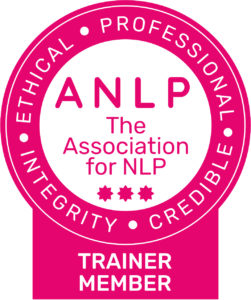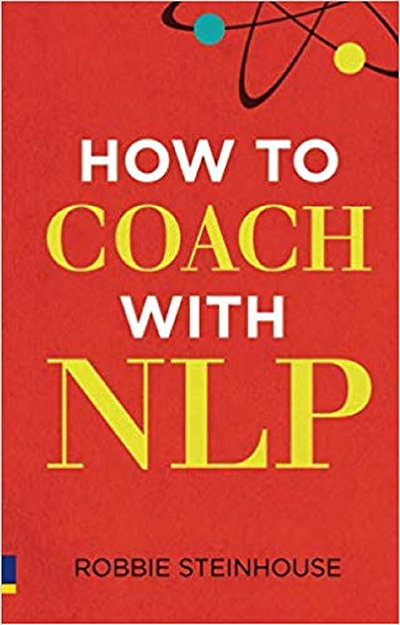Using Mindfulness to Manage Stress and Boost Mental Health
What is mindfulness and how can it help manage stress ?
I would define mindfulness as a mental state, where your conscious attention is taken up with experiencing the present moment. You are no longer dominated by your thoughts and feelings; you have a choice whether to engage with them or not. You become an ‘observer’ of your thoughts and feelings.
Mindfulness is also an attitude. It is a different way of experiencing life: making a conscious choice to actively engage in the experience of the present moment rather than to spend your time projecting your thoughts and feelings into the future or past.
From a communications perspective, mindfulness helps you to be far more aware of what is going on around you. Likewise, you become more aware of the signals you send others (and gain far greater awareness of your own internal signals and what they are trying to tell you).
Stress is a natural reaction to specific demands and events, but ongoing stress can affect a person’s health and wellbeing. Mindfulness has been shown to reduce the stress hormones of adrenalin and cortisol and switch out of the stress response to the relaxation response (see below). Once you become experienced at practicing mindfulness, you can relax much more quickly and efficiently.
What is the difference between mindfulness and meditation?
Mindfulness is a skill. Like any other skill, it needs practice. A useful, formal way of practice is to meditate. I have recorded some free meditation methods you can try here: https://www.nlpschool.com/meditate/ and there are huge numbers available online. Meditation, by the way, is not itself mindfulness; it is a way of getting to mindfulness.
You can learn to enter the mindful state in a matter of moments. About 20 years ago, I attended a yoga and meditation course given by an elderly gentleman called Billy Doyle in his small flat in Hampstead in North London. I recall one time he entered the room and sat down on his mat with an earnest intensity. He rolled his eyes, closed them and seemed immediately to go into a state of peace and mindfulness. This was an ‘A-ha’ moment for me, as I realised that you didn’t need to sit in silence for ages to enter this state. Instead, once you have discovered it within yourself and have learnt how to enter it, the state is always available for you.
What are the benefits of mindfulness?
Mindfulness is an aesthetic value that is worth cultivating: fully appreciating what you are experiencing right now. That could be enjoying looking at a beautiful painting or landscape, enjoying your food while eating, feeling the warm water on your hands while washing, noticing the sensations in your mouth while brushing your teeth, enjoying walking or any activity, whatever it may be.
Part of mindfulness is noticing when you are not mindful – that you are not fully engaged with what you are in the present moment and are instead lost in thought. When you have this realisation, you then decide to switch your focus back to being fully present. It would be torturous to do this every waking moment, but even the occasional switch back into the moment can be very worthwhile.
What will I achieve by practicing mindfulness?
The problem is that at some level, the answer to this question can seem initially confusing – the objective of mindfulness is literally to achieve nothing! However, I see it as a practice of finding a state where you can rest the mind’s relentless search for outcomes. It is a sense of fascination with the present moment: you cannot be bored if you are fully absorbed in the huge array of sensations, pictures and sounds that you can experience in any moment.
The mindful state is not necessarily one of bliss but one of acceptance. ‘This is how I am right now’. We often have a range of feelings playing out at the same time. To use a visual metaphor, we can become aware that there is an overall ‘colour’ of our mood in the present moment, perhaps dark, perhaps light – perhaps we aren’t even exactly sure. At some level, it doesn’t really matter for mindful practice, it simply is what it is – and by accepting what it is without wanting to change it, we notice (effectively benchmarking) how we are right now. That is part of the symmetry of mindfulness: being able to be present and to switch into noticing that we are present (or not) so we can yet again return to being present.
How can mindfulness help my mental health?
Often our mind switches into habitual patterns of uncomfortable feelings along with a repetitive negative narrative. We replay a familiar story – perhaps around family, friends, work colleagues or around health or finances – that consistently makes us feel worse. Yes, there may be truth in the story, but having some choice of when (and how often) to replay it, can really help improve our mood and manage our anxiety. For instance, playing it in the middle of the night, is rarely helpful. When you are able to ‘hold’ whatever you are feeling, in presence, noticing when you are starting to commence the narrative, but being able to ‘pause it for now’ – that can be hugely helpful. By accepting the feelings, without pushing them away, nor magnifying them – we ‘shine the light’ of presence on ourselves; it is surprisingly transformative. Although our feelings can be very strong, they are also temporary, and they naturally shift when not being fed by a narrative. Becoming proficient at mindfulness creates ‘The Relaxation Response’ (see H. Benson, Harvard Medical School).
Mindfulness also reverses the effects of the ‘The Stress Response’ – our evolutionary reaction to a perceived threat. When we sense danger, the adrenalin gland in our lower back pumps out the hormone and puts us in a state of readiness. Blood flows into the limbs, so we can be ready to fight, flee or freeze. Our blood is also taken from the digestive system and, most interestingly, from our frontal cortex (where we think). Sadly, this ancient protective system becomes triggered in situations which are not literally dangerous and also shuts off part of our newly evolved human thinking brain. This is why mindfulness can be so important to make us sufficiently self-aware during these times of intense personal stress: it can give us a small ‘space’ to realise we have a choice to do something more effective. Over time, this can have a profoundly positive impact on our mental health.
What are some tips to make progress in mindful practice?
Once you have found a practice you like, such as counting your breaths (Some suggested methods here: https://www.nlpschool.com/meditate/), to progress at mindfulness, you need to understand the various things that can distract you. Thoughts will attempt to take you away from the practice. When you notice this, remind yourself that you have chosen, for this period only, to take a ‘time-out’ from deliberately thinking, then gently bring yourself back to the practice. Notice the arising of these thoughts/feelings but choose to let them go ‘like clouds passing slowly across a blue sky’ – you notice the cloud, but you choose not to engage with it and just return your focus to the meditation that you are doing. However, this constant natural cycle of distraction and refocus can itself be a distraction – ‘Why am I always distracted?’ Accept that this cycle is what the practice is about; absolve yourself from feeling angry with yourself that you are unable to be permanently present.
Much of this distraction comes from what Eckhart Tolle, in his book The Power of Now, calls the ego, the competitive part of our mind that is absorbed by our own identity, and which is perpetually considering how that identity expressed itself in the past or will do so in the future. The ego doesn’t like it when you are present. It feels abandoned and wants to plan ahead or recall the problems that motivate you to change. Although this motivation is a necessary part of us, we don’t need so much of it. Spending so much time churning the same ideas over and over drains our energy so we find it harder to execute these very same plans. Also, although the future is important, when we arrive there it will be the present – so if we are unable to enjoy the present moment, the improved future that our ego is helping us build will be of little enjoyment or comfort to us when it finally arrives. The ego also gets caught up in issues from our past, replaying narratives where people let us down and perhaps having revenge fantasies about how we will one day get even. The past can become a habitual place that we live in, satisfying the ego’s need for emotional stimulation, even if that stimulation is negative. Our ego is fearful that meditation will lead us to abandon our future plans and past lessons – and thereby make it, the ego, redundant; no wonder it battles. However, once you practice meditation, the ego begins to realise that it is alive and well and not going anywhere. It might even enjoy a brief bit of respite.
We can also try too little or too hard.
Stephen Gilligan quotes 1930s movie star and accomplished swordsman, Errol Flynn: ‘Fighting with a sword is like holding a bird, if you hold the bird too tight – no bird [you kill it]. If you hold the bird too loose – no bird [it flies away]’. Not too loose and not too tight is the guiding principle. This is known in traditional meditation practice as ‘appropriate effort’; too tight is ‘excess effort’ and too loose is ‘lazy effort’. Meditation involves gently balancing our effort level. Starting with appropriate effort, it can drift away into lazy effort; you then notice this and rush to fix it – excess effort – hoping to return to appropriate effort again. The quality of how you both notice these shifts and do something about them is also an important part of meditation practice. You kindly and lovingly notice that you have lost focus, and you then gently and kindly return to the practice. You don’t do this like a detective finding and arresting a criminal, but like a horse whisperer – gently inviting a return.
Mindfulness is a strange state where you are both highly attentive and highly relaxed. There is science behind this human ability both to be engaged in something and to simultaneously be aware that you are engaged in it.
Neurologist Wilder Penfield conducted experiments by stimulating the temporal lobe of awake patients who, through an unfortunate accident, had part of their brain exposed. These patients reported that the stimulation led them to re-experience specific memories depending where the probe was placed. One patient said, ‘I not only remember how I felt, I feel the same way now’. This implies that this patient existed in two states simultaneously: he fully relived the past event, at the same time he was awake and interacting with Penfield and the other staff in the hospital (he was also about to go into surgery; Penfield didn’t have long to do these experiments). The implications for meditation are profound – you can both feel present and notice how that presence is regularly interrupted by your thoughts.
What ‘tools’ can be used to help regain the mindful state?
A key ‘tool’ to help is called the Five Hindrances. An important part of meditation is to learn how to hold uncomfortable feelings without having to enter a narrative about them. Just notice and accept whatever feelings you have, without pushing them away or attempting to engage with them. When you notice your thoughts have returned – pause and notice which of the following categories you can group those thoughts into:
- Hatred or ill will (including feeling angry). Meditation is best avoided immediately after an angry encounter – it is best to cool off and wait a while. However, if you find that when you meditate, you frequently recall a mental shopping list of people or events that trigger your anger response, then this is useful information for you. It is a signal that you may benefit from dealing with these issues in a different way. However, from a meditation perspective it is best to simply be aware of those angry thoughts and then let them pass for now.
- Desire for sensory experience (e.g. wanting to do something, wanting to think or fantasising). When I started meditating, I found it hard to be deprived of doing something even for a short time. Once I practiced a lot, I found much richness in simply enjoying the state of meditation – but it took time. I still find myself wanting to experience things when meditating: I often start thinking about food or planning something nice to do. But when I notice I have started this pattern, I say to myself, ‘I can plan later; for now, I will give myself this brief time to just meditate’.
- Restlessness and anxiety (including trying too hard to meditate). This fits with ‘excess effort’: if you ‘try harder’ when you feel stressed, this can create a negative loop, where you increasingly try hard to feel relaxed and simply become more and more stressed. This can be an important lesson, that you actually need to move in the opposite direction (try less hard). Deliberately relaxing your body and moving your attention into your abdomen can remove these circular thoughts. Notice and acknowledge the pattern (‘I’m feeling restless’) and just gently return to the practice.
- Sloth and torpor (including feeling sleepy or unmotivated). This fits with ‘lazy effort’. Sometimes people are in a state of near permanent exhaustion and meditation can be a signal that they simply need to rest. However, if this happens frequently it can also be a tactic by your ego to avoid meditation, and you need to deliberately increase your energy level. Adjust your posture and sit up straight.
- Doubt and indecision (including being unsure of one’s ability to meditate). Everyone has insecurities about learning and doing something new. Even highly experienced performers can suffer from ‘freezing’ and worry that they will lose their skills. This is also the ego’s fear of becoming redundant, mentioned above, and partially a negative belief about your own abilities: ‘I can’t do this’. Name and acknowledge that sensation: ‘I am feeling doubt and indecision and that is completely natural’ and then return to the practice.
I cover a mindful practice on each day of our trainings. Do check out the next dates here: https://www.nlpschool.com/events-2-2/









